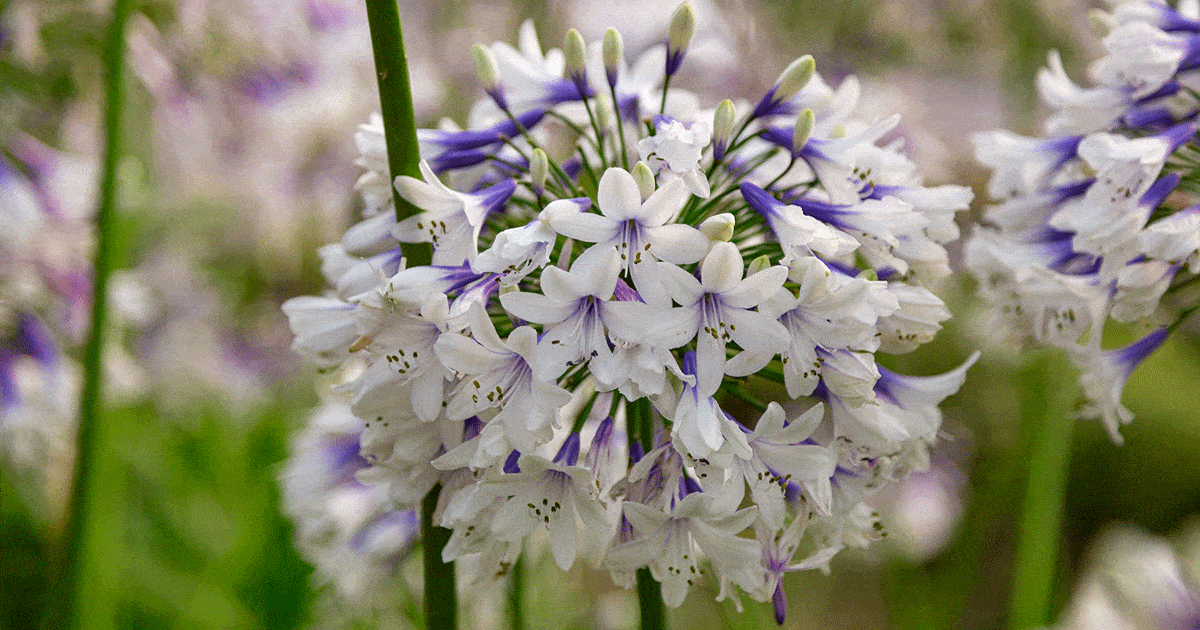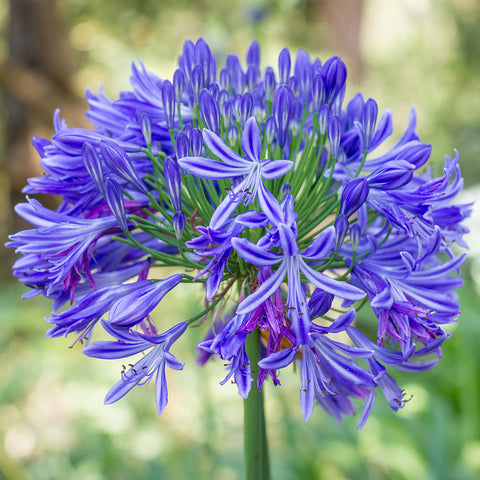Understanding the Art of Agapanthus Treatment: Important Actions for Healthy And Balanced Development and Dynamic Flowers
In the realm of gardening, the cultivation of agapanthus stands as a fulfilling endeavor for those that look for to nurture these sophisticated blooming plants. From choosing the best selection to mastering pruning methods, the journey in the direction of cultivating flourishing agapanthus plants is multifaceted and holds the key to opening the complete potential of these herb gems.

Selecting the Right Agapanthus Selection

When choosing the right Agapanthus variety for your garden, think about elements such as climate suitability, bloom shade, and development habit. Additionally, consider the climate in your area to make certain the Agapanthus variety you select can thrive in your details problems. Recognizing the growth behavior of different Agapanthus ranges is crucial for appropriate positioning within your garden.
Perfect Growing Problems
Thinking about the optimal environmental demands is essential for effective Agapanthus growing. Agapanthus flourishes in well-draining soil with a slightly acidic to neutral pH level. When planting, select an area that obtains complete sunlight to partial shade. In hotter climates, offering some mid-day shade can avoid scorching of the fallen leaves. Agapanthus plants are delicate to cold temperatures and should be safeguarded from frost throughout winter season.
To make certain healthy development and dynamic blossoms, plant Agapanthus bulbs at a depth of regarding 2-4 inches and space them 8-12 inches apart. Adding raw material, such as compost, to the soil can improve water drainage and fertility, advertising robust root growth. Mulching around the base of the plants helps preserve dampness and reduces weed growth. Normal watering is vital, specifically throughout the growing season, to keep the dirt consistently moist but not soaked.
Watering and Fertilizing Tips
Maintaining proper moisture levels and supplying essential nutrients are key aspects in the treatment program for Agapanthus plants. It is critical to strike an equilibrium when it comes to watering Agapanthus. These plants prefer continually moist soil but are at risk to root rot if overwatered. During the expanding season, water deeply once a week, guaranteeing the soil is well-draining to avoid waterlogging. In hotter climates or during periods of dry spell, even more regular watering might be needed to maintain the dirt evenly wet. However, minimize watering in the wintertime to avoid water logged conditions.
Feeding Agapanthus is crucial for promoting healthy growth and prolific flowers. Apply a balanced fertilizer, such as a 10-10-10 formula, in the early spring as new growth arises. By complying with these watering and feeding tips, you can ensure your Agapanthus plants thrive and produce vibrant, durable blooms.
Pruning Strategies for Agapanthus
Pruning Agapanthus plants at the ideal times and with appropriate strategies is critical for keeping their health and wellness and advertising optimal growth and flowering. The optimal time to trim Agapanthus is in late wintertime or early springtime prior to brand-new development arises. Beginning by getting rid of any kind of yellowing or dead leaves near the base of the plant. Cut them as short as possible without harming the emerging shoots.
For flowered stems, wait until the blossoms have perished and after that cut them back to the base. This not only tidies up the plant's look but also motivates the advancement of brand-new flower buds. Deadheading spent flowers can likewise reroute the plant's energy right into generating more blossoms instead of setting seeds. Nevertheless, if you intend to accumulate article source seeds for proliferation, leave some flowers to mature and dry on the plant.
Bear in mind to utilize clean, sharp tools to make exact cuts and lower the threat of introducing illness. Agapanthus. Routine trimming will certainly assist keep your Agapanthus looking healthy and neat while making sure an abundant display of attractive flowers
Handling Typical Insects and Illness
After making certain proper trimming techniques for Agapanthus, it is important to resolve typical parasites and illness that can affect the health and vigor of these plants. Agapanthus plants are generally hardy yet can still drop sufferer to certain problems. One common parasite that affects Agapanthus is the Agapanthus gall midge. This tiny, orange fly lays its eggs in the foliage, causing distorted growth and blossom buds that stop working to open. To battle this pest, trim and destroy any afflicted plant parts and consider utilizing insecticidal soap.
Another usual issue is fungal leaf place, which offers as dark lesions on the fallen leaves. To stop fungal diseases, ensure excellent air flow around the plants, avoid overhead watering, and get rid of any kind of contaminated leaves immediately. In addition, Agapanthus plants can deal with origin rot if they are grown in improperly draining pipes soil. To avoid this, plant Agapanthus in well-draining soil and avoid overwatering. By being cautious and taking punctual activity versus insects and illness, you can help your Agapanthus plants thrive and create vivid blooms.

Final Thought
To conclude, understanding the art of agapanthus care entails choosing the appropriate range, offering suitable planting problems, appropriate watering and fertilizing, appropriate pruning techniques, and dealing with typical bugs and conditions. By complying with these important actions, you can ensure healthy development and vivid flowers for your agapanthus plants. Remember to frequently keep track of and maintain your plants to advertise their overall health and durability.
To make sure healthy development and lively blossoms, plant Agapanthus light bulbs at blog a depth of regarding 2-4 inches and area them 8-12 inches apart. By complying with these watering and fertilizing pointers, you can ensure your Agapanthus plants flourish and produce vibrant, resilient flowers.
One her explanation typical pest that influences Agapanthus is the Agapanthus gall midget. Additionally, Agapanthus plants can endure from root rot if they are grown in inadequately draining pipes soil. By following these necessary actions, you can make sure healthy growth and lively blossoms for your agapanthus plants.